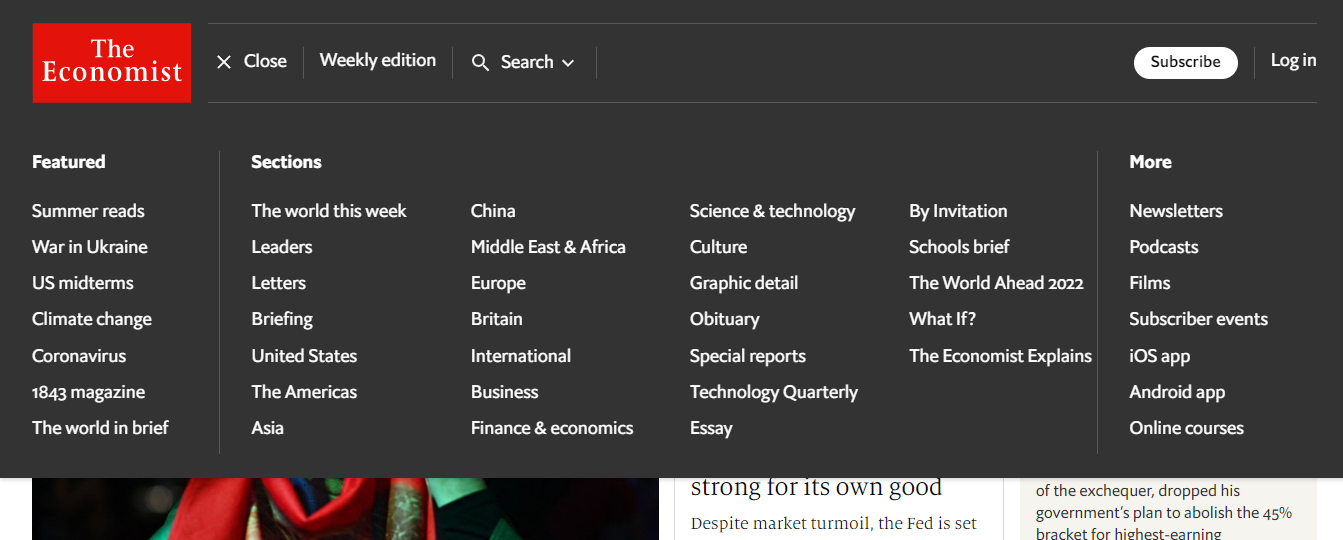2.2.1 What Is Site Structure and Why Is It Important?
Site structure is how your website’s content is organized. Publishers tend to put out content regularly, which means that pretty soon you’ll have a large amount of coverage on related topics. It makes sense then to organize this content so that it becomes easy to access.
For instance, the screenshot below shows how The Economist organizes the content on its website under different categories. This is their site structure.
Everytime a user clicks on a post on The Economist’s website, they know exactly where they are within this site structure as well as how to find their way back to the homepage or to other pages. In the screenshot below, we can clearly see the path that the user followed to get to this particular page, which is Finance & economics > US economy.
Breadcrumbs represent a trail that leads both users and web crawlers to specific pages, acting much like the breadcrumb trail in the Hansel and Gretel fairy tale.
Site structure is important because of its utility. Without site structure, users see a random collection of articles that not only makes navigation difficult, but makes little sense to them. If users have difficulty finding what they are looking for, they will have little incentive to return to the website.
2.2.2 Challenges Publishers Face With Site Structure
Having a well-defined site structure is important. Yet, many publishers seem to neglect it. This is often because they:
- Don’t know how to go about structuring their website’s content. Creating a site structure involves more than just creating internal links.
- Don’t know what to model their website’s structure on. Content on a website can be structured along several models such as hierarchies, sequences, clusters, etc. Different models may be best suited for different kinds of websites.
- Aren’t aware how small factors such as URLs, content pruning and navigation impact SEO.
Upgrade to a premium plan to access the content.
Upfront
(1 payment)
-
7 chapters
-
53 modules
-
20+ hours of educational videos
-
Monthly 1-on-1 coaching
-
Ready-to-use templates
4 Quarterly Payments Of
-
7 chapters
-
53 modules
-
20+ hours of educational videos
-
Monthly 1-on-1 coaching
-
Ready-to-use templates
Course Only
(1 Payment)
-
7 chapters
-
53 modules
-
20+ hours of educational videos
-
Monthly 1-on-1 coaching
-
Ready-to-use templates





